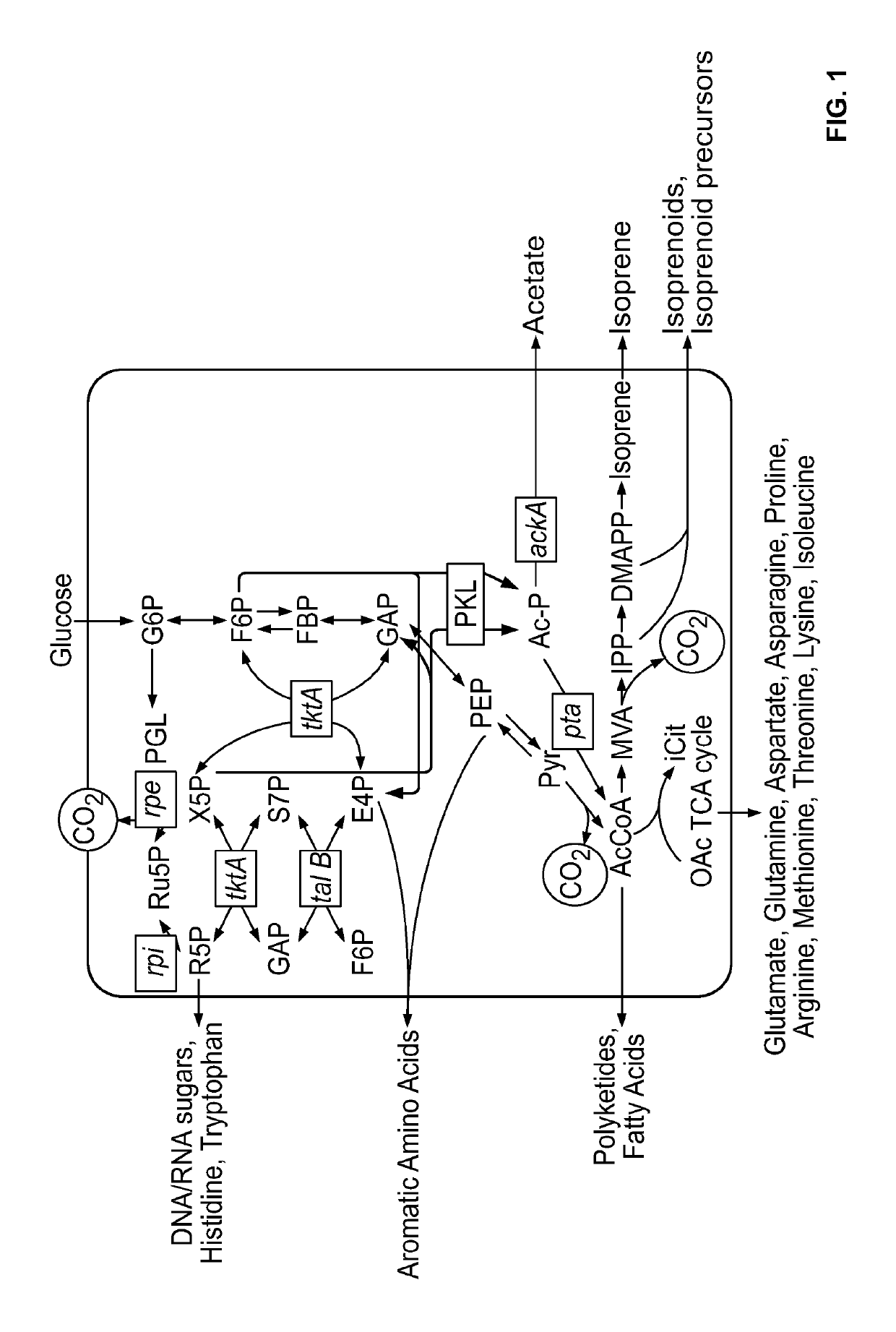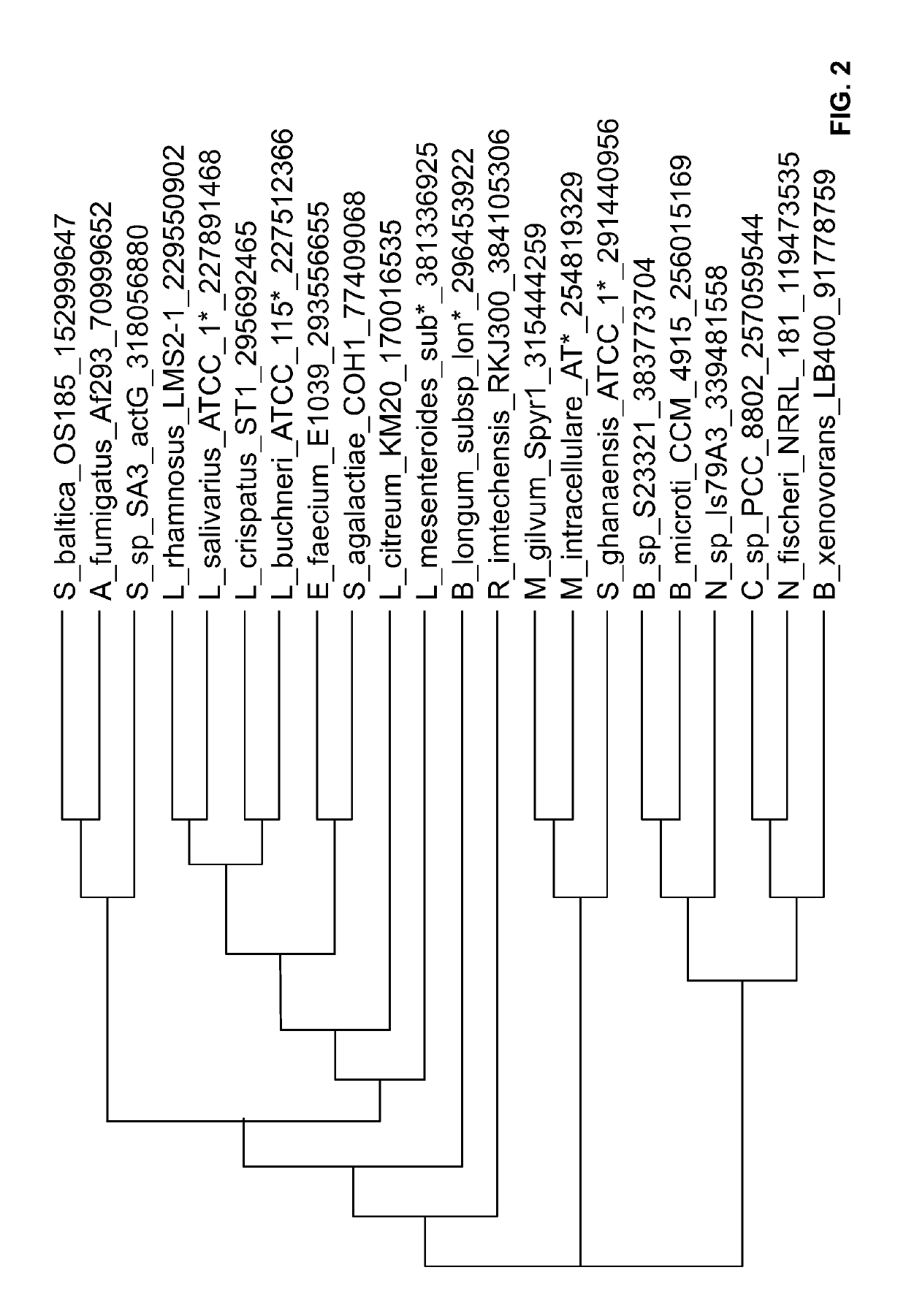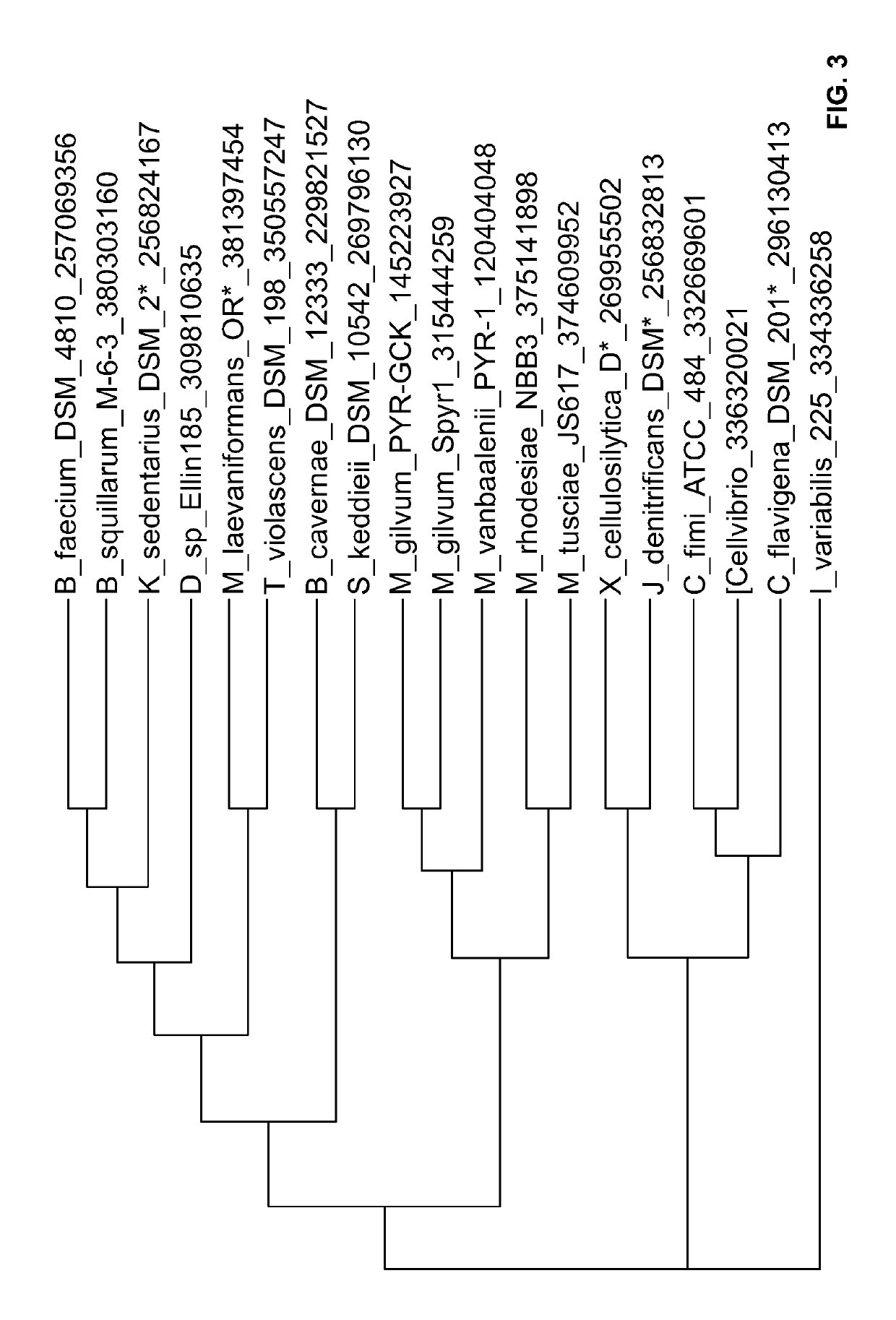Phosphoketolases for improved production of acetyl coenzyme A-derived metabolites, isoprene, isoprenoid precursors, and isoprenoids
a technology of phosphoketolases and acetyl coenzyme a, which is applied in the field of phosphoketolases for improving the production of acetyl coenzyme aderived metabolites, isoprene, isoprenoid precursors, and isoprenoids, can solve the problems of reducing the production yield of acetyl-coa-derived metabolites, isoprenoid precursors, and isoprenoid molecules
- Summary
- Abstract
- Description
- Claims
- Application Information
AI Technical Summary
Benefits of technology
Problems solved by technology
Method used
Image
Examples
example 1
ation of Phosphoketolases
[0490]To identify phosphoketolases that could be used for improved production of acetyl coenzyme A-derived (acetyl-CoA-derived) metabolites, isoprene, isoprenoid precursors, and isoprenoids in recombinant cells, the CDART program within the NCBI website was used to select all gene products that were consistent with the known phosphoketolase domain architecture (Geer L et al. (2002), “CDART: protein homology by domain architecture.”, Genome Res. 12(10)1619-23). Sequences were further refined by selecting the refseq sequences from the original domain architecture search. Next, the sequences were clustered into 22 distinct groups based on sequence similarity (Clustering by Passing Messages Between Data Points. Brendan J. Frey and Delbert Dueck, University of Toronto Science 315, 972-976, February 2007). Briefly, the amino acid sequences were multiply aligned using ClustalW. Pairwise percent identities (PIDs) were calculated. This was operationally defined and i...
example 2
ation of Phosphoketolases in Bacterial Genomes Lacking Phosphofructokinase
[0496]A search was conducted for bacterial genomes that had an annotated phosphoketolase (PKL) but did not have an annotated phosphofructokinase (PFK), a critical enzyme for carbon flux through glycolysis. Several organisms that fit these criteria, and from this list five PKLs, specifically PKLs from Burkholderia phytofirmans PsJN (SEQ ID NO:47), Lactobacillus buchneri NRRL B-30929 (SEQ ID NO:48), Bifidobacterium gallicum DSM 20093 (SEQ ID NO:49), Bifidobacterium dentium Bd1 (SEQ ID NO:50), and Bifidobacterium bifidum IPLA 20015 (SEQ ID NO:51), were chosen for investigation of high activity and increased yield of isoprene from glucose. Since most of the PKLs from the full list of organisms have not been characterized, the five PKLs that were chosen were based on sequence diversity and the best circumstantial evidence of high activity that could be obtained in the literature. The PKL from Bifidobacterium dentiu...
example 3
f Identified Phosphoketolase Enzymes
[0497]PKLs obtained from Bifidobacterium longum subsp. infantis, Enterococcus gallinarum, and Clostridium acetobutylicum were each assayed for enzyme activity. Bifidobacterium longum subsp. infantis PKL had a Km of 5.7±1.16 mM, a kcat of 4.56±0.2 sec−1, and a kcat / Km of 0.79±0.2 mM−1 sec−1, Enterococcus gallinarum PKL had a Km of 10.4±1.03 mM, a kcat of 1.35±0.04 sec−1, and a kcat / Km of 0.13±0.1 mM−1 sec−1, and Clostridium acetobutylicum PKL was found to have a Km of 10.3±0.67 mM, a kcat of 2.18±0.05 sec−1, and a kcat / Km of 0.21±0.06 mM−1 sec−1. A construct encoding the Bifidobacterium longum subsp. infantis, Enterococcus gallinarum, or Clostridium acetobutylicum PKLs was used as a control to screen the candidate PKL enzymes for in vitro and in vivo activity.
[0498]The amino acid sequence of Enterococcus gallinarum PKL (SEQ ID NO: 93) was obtained from GenBank and was processed in GeneArt optimization software for optimized expression in E. coli. T...
PUM
| Property | Measurement | Unit |
|---|---|---|
| solubility | aaaaa | aaaaa |
Abstract
Description
Claims
Application Information
 Login to View More
Login to View More - R&D
- Intellectual Property
- Life Sciences
- Materials
- Tech Scout
- Unparalleled Data Quality
- Higher Quality Content
- 60% Fewer Hallucinations
Browse by: Latest US Patents, China's latest patents, Technical Efficacy Thesaurus, Application Domain, Technology Topic, Popular Technical Reports.
© 2025 PatSnap. All rights reserved.Legal|Privacy policy|Modern Slavery Act Transparency Statement|Sitemap|About US| Contact US: help@patsnap.com



